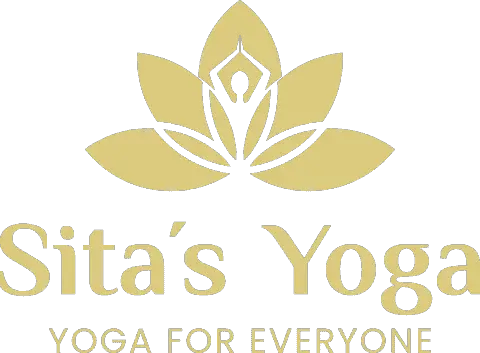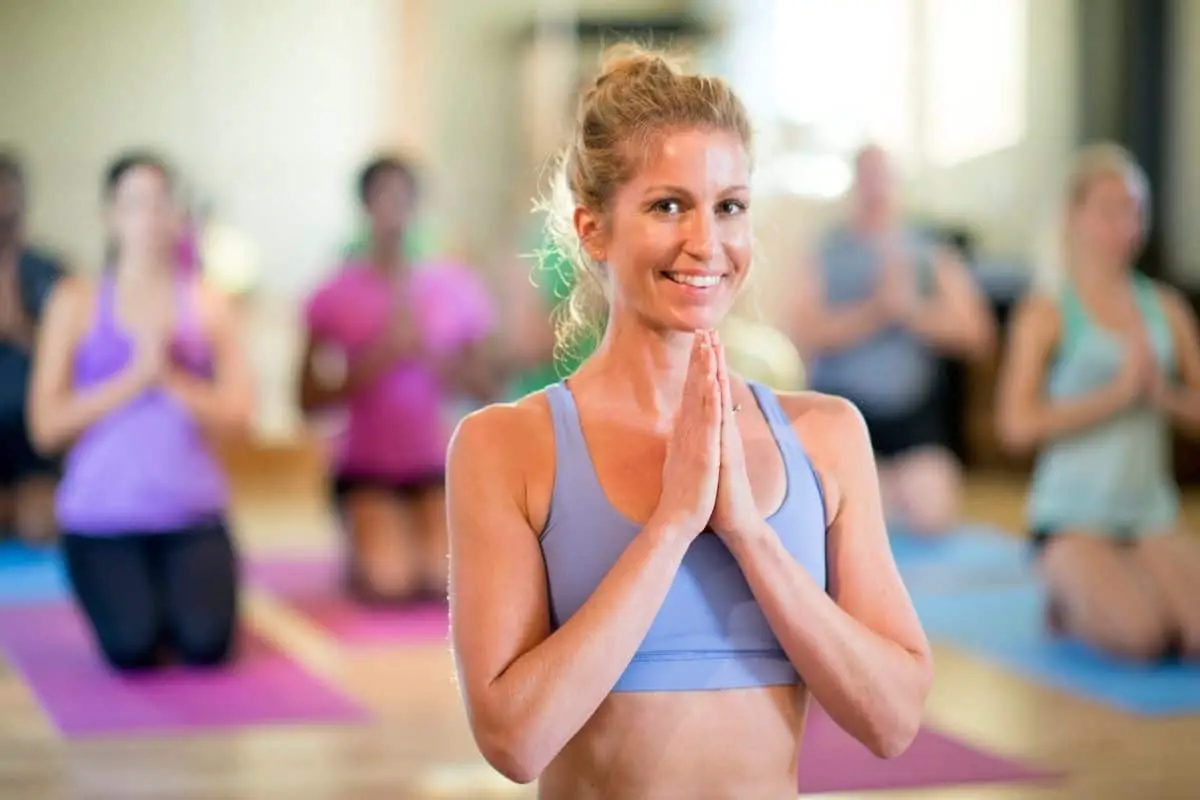One of the most intimidating experiences of a new yoga teacher is memorizing a yoga sequence. We all fear getting in front of our first group only to have forgotten the right flow. Luckily, there are several helpful strategies for you to use in memorizing your sequence.
Practice, repetition, and visualization are all helpful strategies that can be used to memorize a yoga sequence. However, the best tip we can suggest for you is to be patient. Memorization takes time, so it is best to give yourself some grace while learning!
However, there are many more techniques that are available. Let’s take a glance at a more in-depth guide below to see more options you can use.
Practice, Practice, Practice
Practice makes perfect, right? So, it only makes sense to add lots of practice time to best memorize your yoga sequence. The more you actively practice, the more likely you are to remember what comes next.
Think about it in the sense of dancing. Dancers constantly have rehearsals to practice their routine for upcoming shows. And it’s not just rehearsing. They are actively participating in the practice, so their bodies will remember the routine.
It’s the same way with yoga. The more you practice the routine, the more your body will remember the sequence. It will be ingrained into every nerve.
Visualize the Entire Sequence
Visualization has the power to make things more imaginable. Often, they stick in your memory more so than other techniques. To apply this strategy, you can simply create images in your mind of the different postures included in the sequence. However, don’t just start there. Visualization allows you to create vivid, imaginable stories that help you to remember information.
You can create a different world in your own head! For now, however, you might want to just stick with the sequence. Visualize your body physically getting into the pose, hold it while you breathe in and breathe out, then getting out of that pose as you transition to the next. You can include the setting, the people, the feel – everything. All of this will help you memorize your yoga sequence.
Write It Out or Say It Aloud
Studies have found that writing helps us deeply encode information that we are trying to learn and memorize. This is due to a direct connection between your hand and brain. You can start by writing down the sequence that you are trying to memorize. It might be easier to outline the steps first and then add notes or other information afterward.
For example, the simple anatomy of a yoga class would include grounding, integration, salutations, postures, and savasana. You can write this down and then add specifics of your sequence in between.
While you are writing the information, you could try saying the steps aloud as well. This will further help you to keep the information in your mind. You can actively engage with it as well by reading it every once in a while. The more you write, read, and say aloud – the likelier it will be for you to remember.
Note: When writing, many individuals have also found that creating flashcards can help. If you include these, make sure to actively participate with the cards.
Use Mnemonic Devices
Until Thoughts Stop Acting Like Excited Monkey’s – Confusion. You’re probably wondering what that means; well, it is a mnemonic device. Mnemonics are systems that make information more memorable. One of the most common forms is using the first letter in each word that you want to memorize and putting it into a sentence that also uses the same letters.
In the case above, the mnemonic device is used to remember Buddha’s Noble Eight-Fold Path – Understanding, Thoughts, Speech, Actions, Livelihood, Effort, Mindfulness, Concentration. So, as you think about the above phrase, it will help you remember the words for the Eight-Fold Path.
Record and Listen to the Flow
Have you ever listened to a home-guided meditation flow? As you listen, you are guided into a state of moving meditation where you use awareness and action to focus on the task at hand.
The concept is similar. When you record your yoga sequence, not only are you able to get more practice to ingrain the methods, but you are also getting audible feedback on your speech, intonation, and pacing.
You can listen on your drive home, in your living room, or anywhere else you find to work. You can also take the time to listen to other yoga sequences from other teachers. It might help you find a way to emulate what you like about their teaching methods.
Vary Your Routine
We can’t stress this strategy enough. Vary your routine! Practicing your yoga sequence in different ways is more likely to become ingrained in your mind and body. Not to mention, some strategies may work better for you compared to others. So, by varying your methods, you can easily compare what works best while also gaining all the experience to help you memorize the flow.
Teach It
If you would like a serious confidence booster, you might consider getting together with a fellow yoga teacher to do one-on-one teaching. Being in a smaller setting, there will be less pressure and more direct attention from each other.
It’s also a great way to learn from each other. You can take turns teaching, and by watching one another closely, you can find better ways to cue your alignment, monitor your pacing, or to review transitions.
If you feel more comfortable with a larger group, you can practice teaching that way as well. It’s a great way to step out of your comfort zone and to gain insightful experience of teaching. Just keep in mind that there are going to be hiccups, and that’s okay! Because we all learn from our “mistakes.”
Chunking Sections of Postures
When you memorize a phone number, do you take it all in at once, or do you break them into chunks? Into chunks, right? We take smaller portions to memorize a whole sequence. The same goes for memorizing a yoga sequence.
You can break your yoga sequence into mini-flows or segments to help you remember the whole thing. It also gives you a chance to work more closely on sections you are having a hard time remembering. However, you also want to focus on the big picture all the same. Consider the energy and the peak. How do you want your class to build up to the peak and cool down?
Another trick is by adding poses one at a time. When you start building your yoga sequence, concentrate on what feels right. Then, add the poses one at a time until you feel that the flow is just right!
Relate to Memories
You might find it helpful to relate your yoga sequence to something you already know. If you isolate the material, it will be more difficult to remember, so by linking them to other connections; you will have a better chance at remembering.
Even if you can’t think of something in your life to connect it to, you can come up with some crazy, fun scenario that will remind you when to transition.
Some of the poses already share names with specific animals, which could be a helpful factor. For example, say you want to remember to transition from the cat pose to the cow pose, but you can’t seem to remember that at all!
You might make the transition more fun for practice by finding a connection in the noises that each animal makes. Silly, right? However, it can help. In fact, many poses that were named after animals were to encourage releasing emotions and tensions like the animal’s can.
Focus on the Moment
Remove all distractions from around you. Take out the sounds, the people, the phone, etc. Then, start your sequence. But take time. You want to feel the flow in your body. You want to feel the rhythm and movements.
When you take time to feel these things, it brings you closer to understanding your body and spirit. You will get into a groove and feel what is right. It is okay to miss something in these moments. However, the more you go with the flow, the more you feel it in your body, the more you will remember the sequence you have chosen. It will just feel right.
If All Else Fails, Take It Freestyle
Don’t be afraid to take it freestyle! In all honesty, taking it freestyle can be better. It will even allow you to make changes at the moment to accommodate your students’ needs. It is okay to stray from your original plan and to go out of your comfort zone. It might even encourage you to take at the moment more and to feel the flow. Your students will sense this energy, which will lead them to feel more in-tune with the flow.
Helpful Tips for Creating a Sequence
Now that we have provided you with 11 great tips to help you memorize your yoga sequence, we would like to give extra helpful information on how best to create your own personalized yoga sequence. Continue reading below to learn the four major steps.
Have a Focus for the Class
Every class will have a specific focus. However, there will also be distinguishing factors that will deem the class’ focus of your sequence. Below are some factors that will help you move in the right direction.
- Anatomical or biomechanical. You will want to determine if the class will focus on an anatomical factor or a biomechanical factor. If your class is mostly anatomical, it will focus on a certain part of the body, such as your abs, legs, or arms. However, if your class is mostly biochemical, it will focus more on movement for specific areas of the body, such as working on hip or knee mobility.
- Energy or state. Another factor would be determining the energy or state of the class. You might focus on grounding, centering, or activating. Of course, you can add more than one element, but depending on the class, it might be better to just focus on one.
- Enhance or balance events. Some classes can be made for the sole purpose of balancing events, whether they be holidays or world events. Some may enhance great feelings, while others can be used to ground the class during hard times.
- Specific demographics. Focusing a class on a specific demographic or need is quite common. For example, some classes can be made with senior citizens in mind, while others might be made for individuals with PTSD.
What Is the Nature of Each Pose?
All posts are valuable in some way, but not all are created equally. Some poses may require more focus, some might require greater physical effort, and still, others are more relaxing. You will want to bind the sequence with a series of poses that support the intention of your class. Not only will they flow better, but they will determine the focus for your class to go by.
Find Relationships Between Poses
When you determine the nature of each pose, you will then find a way to connect different poses that are understanding of nature. There should be relations in the sequence order. For example, you might consider if the poses share similar foot patterns or how the pose affects the posture of the following poses.
Balance Your Sequence
Once you are clear on the class’s focus and the nature and relationship between the poses, you will want to craft a sequence that supports it. You might want to consider building the momentum to the climax and then winding down afterward. The sequence should not be one wavelength. There should be rest times and energetic times, all within a varying amount. Don’t focus too much on one or the other. The sequence should flow.
Final Thoughts
We made this article to help you find different methods for memorizing a yoga sequence as well as offering helpful techniques to make the best yoga sequence you can. Each yoga teacher will find out their own unique approach to memorizing, sequencing, and teaching. Maybe for you, memorizing means chunking the sections of portions, or maybe you will find more use in visualization.
Still, there are no right or wrong ways to memorize a yoga sequence. Sometimes, all it takes is flexibility and motivation. As long as you and your students are happy, then there are no wrong choices!
Sources
- Yoga Humans: How to Memorize your Sequence Before you Teach a Yoga Class
- Alive in the Fire: Vinyasa
- Yoga Journal: What You Didn’t Learn in YTT
- Stanford Medical: Memorization Tool Bulks Up Brain’s Internal Connections
- Very Well Mind: 7 Easy Tips to Improve Your Memory and Recall
- Lumen Learning: Ways to Enhance Memory
Sitasyoga.com is a participant in the Amazon Services LLC Associates Program, an affiliate advertising program designed to provide a means for sites to earn advertising fees by advertising and linking to Amazon.com. We also participate in other affiliate programs which compensate us for referring traffic.



